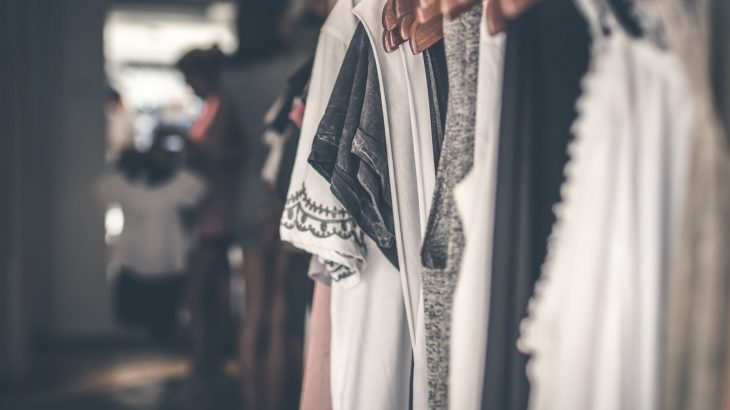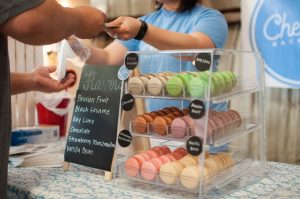Retail has existed for an extremely long time — and the only thing we all know is there are lots of distinct approaches when it comes to retail design and establishing your shop design. But, in addition, there are some frequent design plans that all retailers may use that contribute to greater sales for your small business.
Designing your retail shop’s interior is a subject that we have been looking at lately in a bid to help boutique retailers be more effective and thrive in the modern digital era. By telling your new narrative and producing immersive purchasing experiences, to putting together head-turning window screens and signage essentials, in regards to retail, the devil is in the information. Therefore, we would like you to help you to get the fundamentals down pat.
Not certain where to begin with your shop design and retail layout? Here, we will take a look at a few of the fundamentals when it comes to creating successful retail interiors that bring more clients to your shop, get them searching for more products, and also invite them to go toward the checkout.
It is crucial to keep this reality in mind: By the minute someone steps into your shop to time they choose to check out (or even leave your shop without making a purchase), clever design choices make an important difference about if you create a purchase or not.
Enter the Threshold
The threshold region also called the ‘decompression zone’, is your very first distance that potential clients measure to when they enter your store. It typically comprises the first five to fifteen foot worth of distance, based on the total size of your shop. It is also the area where your clients make the transition from the external world and experience what you’ve got to offer you.
Now, shoppers also make crucial decisions such as how inexpensive or expensive your shop is very likely to be and just how well coordinated your fixtures, lighting, product displays, and colors are. Since they are in a transition mode, clients are more likely to overlook any item, signage, or even carts that you put there.
Have Shoppers Walk a Trail
As a merchant, it is likely to utilize furniture, racks, displays, and other resources to make a clear path for the clients through your shop. This may vary greatly based on how big your overall store design. But you realize that many North American clients will obviously turn right — thus, your next task is to be certain as they perform, they also keep walking throughout your shop to acquire the most exposure to your goods. This not only raises the odds of them making a purchase, but a well-thought-out path may be a terrific approach to subtly control the ebb and flow of foot traffic from your shop.
Most shops use a circular route to the proper (or counterclockwise) for clients to walk through the rear of the shop and come to the back. Some will make it easier by covering the trail with another feel or look in the overall floor, paying homage to the old expression “where the eyes move, the toes will follow”
Another tactic to remember is that you would like to use the route to direct your clients to someplace. By way of instance, look at putting an eye-catching and attention-grabbing metal display stands or artwork at the end of your aisle route.
However, Slow Them Down
Considering all the time and effort you have put into correctly merchandising your goods, the very last thing you need is for incoming clients to rush past them this finally restricts the number of goods they will buy. 1-way retailers fight this is through producing breaks that induce them. These are sometimes known as “speed bumps.” Basically, this may be anything that provides customers a visual break and also may be accomplished via signage or special/seasonal displays.
Most retailers efficiently deploy the use of what is known as “product outposts,” that are specific display fixtures comprising products close to the conclusion of or between aisles. These fixtures encourage impulse buys while complementing products on sale in near proximity. Sometimes, these do not have to be display pieces. Some have used the existing architectural timbers beam as a feature in place of art display.
But as you might not have the “aisles” division in your shop, it is still important to consider grouping merchandise in a means which is reasonable out of a shopper’s view. This can be done by strategically placing the racks with the help of existing building features, like a glulam or concrete beam as a divider, for example. Additionally, don’t forget to maintain “higher-demand” products exhibited at eye-level whilst putting lower-grossing products in the base or above eye level. Last, It’s suggested that you switch these up against speed bumps per week or frequently enough to produce a continuing awareness of novelty for repeat traffic.
To understand how to get more out of your merchandising, have a look at these 6 visual merchandising suggestions which may help you generate more revenue per square foot.
Be Sure Shoppers Are Cozy
You could already know about something called the “butt-brush effect,” appreciated by customer behavior specialist Paco Underhill. He found that a normal client, particularly girls, will prevent going after product within an aisle where they could brush their backside with one another. This is true even when the client is quite interested in a specific product. A simple way to prevent this dilemma is to make sure your aisle, flooring, and screens permit clients to get more than sufficient personal space when surfing your merchandise.
You could even create your shop comfortable by integrating a waiting place with comfortable chairs and seats to encourage clients to invest more time in your shop. This is particularly beneficial for shoppers followed by somebody who isn’t interested in purchasing anything. But keep the chairs or chairs facing the product so they’re top of mind to all those lounging around on your shop.
Finally, Check Them Out
Where you put your checkout counter as well as your POS at a physical retail shop is a matter you may ask yourself. But a fantastic guideline to keep in mind is that the voucher ought to be found in a natural stopping point from the purchasing experience that you have intentionally made.
If clients obviously turn right whenever they go into, and you also direct them to ring all the way around, you will understand that the front left is most likely the perfect place for the checkout counter. But this choice also depends upon the dimensions, design of the shop itself, and the products that you sell, so you will need to use your very best judgment on the most ordinary point to get this check-out countertops. For example, larger products like basketball uniforms or the more expensive goods in your store should not be placed near the check out counter so as to give the customers time to think about making their purchase.
You will also need to remember that if you are a one-person display or do not have employees wandering the shop, it is going to be essential to have the ability to see everything from a loss-prevention view. Other tips to Remember when designing your checkout counter are:
- Possessing a counter that is large enough for shoppers to put their luggage and/or private possessions
- make the most of this wall behind the counter to make engaging and interesting screens
- Invite impulse buys by stocking things clients crave or commonly desire nearby
- Be considerate in person by asking questions such as “Were you able to locate everything you were searching for?” And in question concerning your exchange or refund policies
Moving Forward With Your Shop Design and Retail Design
Designing your retail inside is a never-ending process, at which you can continually be shifting up, tweaking, adding, or taking off to make a resonating customer experience. It does not matter whether you sell basketball jerseys or boxed artisan chocolates in your shop, but at the close of the day, you just want to concentrate on the client experience.
Take a walk-through your self and determine where the visual cues guide you or receive your employees, friends, or loved ones to do the exact same and provide you with honest opinions. Do not neglect to watch your clients and see what they are attracted to, what they prevent, and the way they proceed, then match with your planned design. Should you remain springy and keep your eyes and ears open, you will make certain to make a retail layout that is a win-win for both you and your clients.


